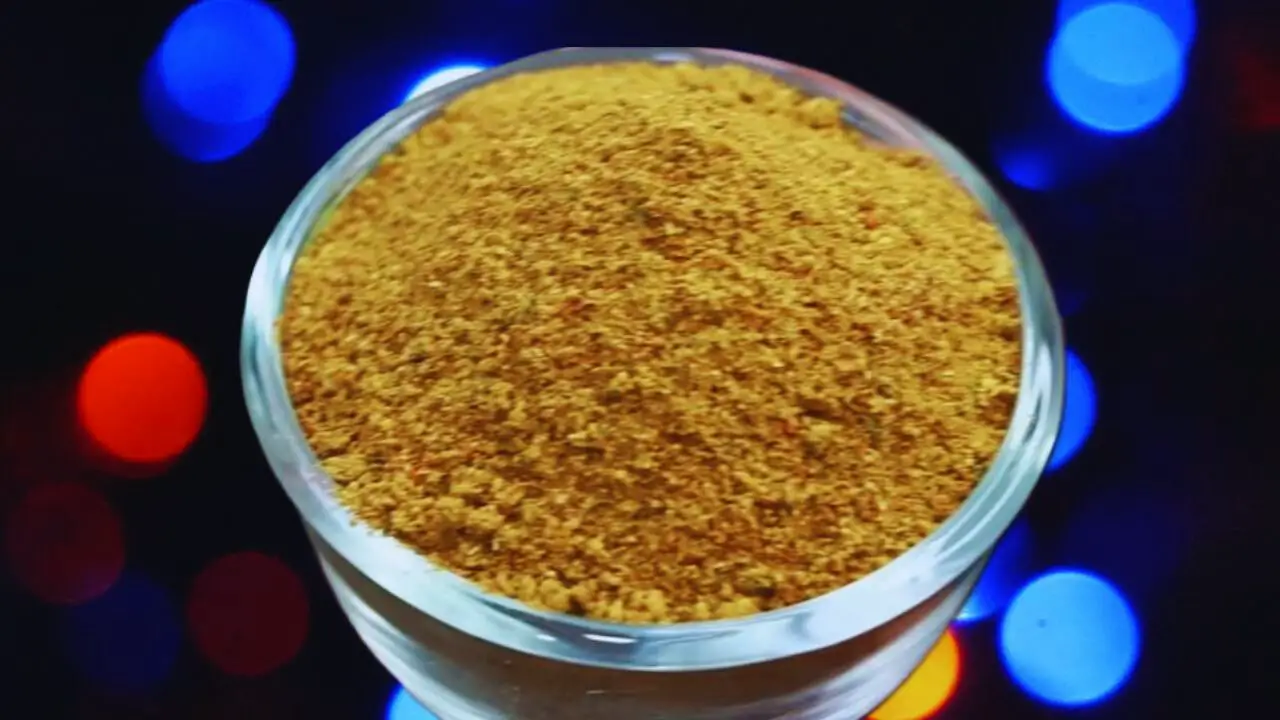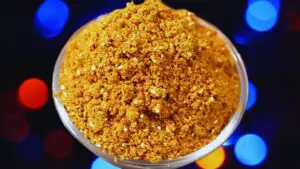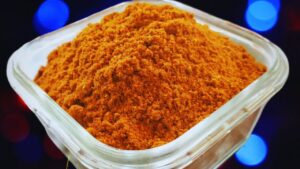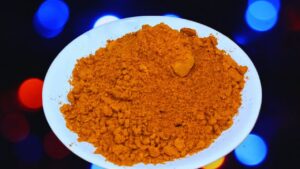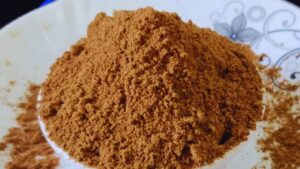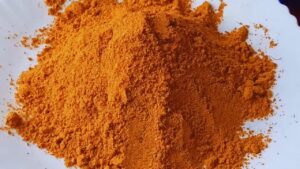Rasam masala powder is a special South Indian mix of spices made from different ingredients like coriander seeds, pigeon peas, cumin seeds, fenugreek seeds, curry leaves, and a variety of aromatic spices.
Here are the simple steps to follow to make rasam masala powder at home.
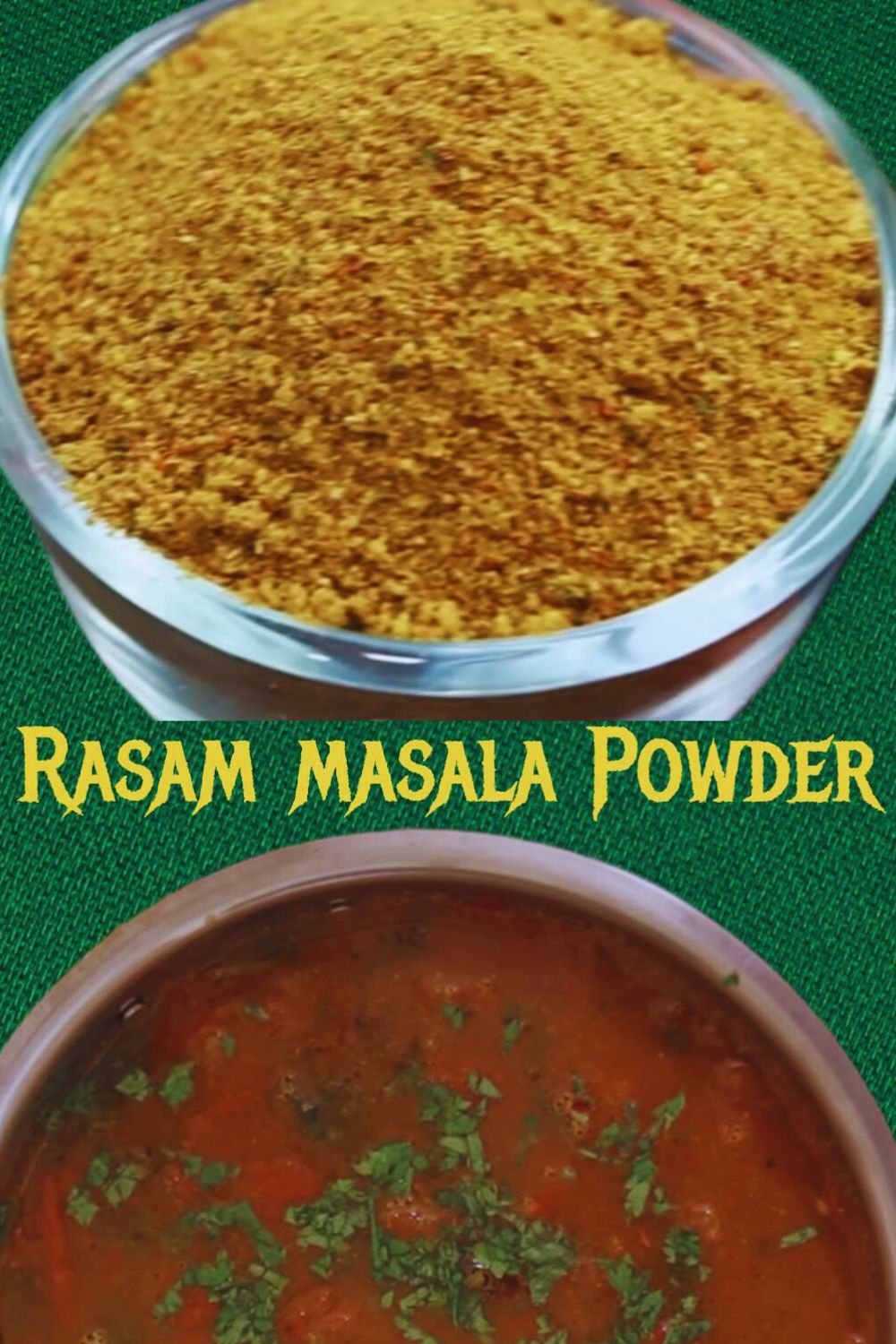
KEY TAKEAWAYS
- Homemade rasam masala powder is a must-have spice mix in South Indian kitchens and often surpasses the store-bought variants in authenticity and flavor.
- The powder is used in a variety of South Indian dishes to enhance their taste such as rasam, sambar, vegetable curries, spicy gravies, puli kulambu, rice dishes like rasam rice, tomato rice etc.
- Store your powder in a cool, dark place, away from moisture. Use an airtight glass jar and keep it inside your kitchen cupboard.
- Sambar masala powder, classic garam masala powder, chaat masala powder, dhaniya-jeera powder, curry powder, and puli kulambu powder offer a slightly similar taste as rasam masala powder.
How to Make Rasam Masala Powder? (Step by Step Guide with Images)
Step 1: Take a round bottom wok and heat it on a low flame on your gas stove to roast each of the ingredients to make rasam masala powder separately.
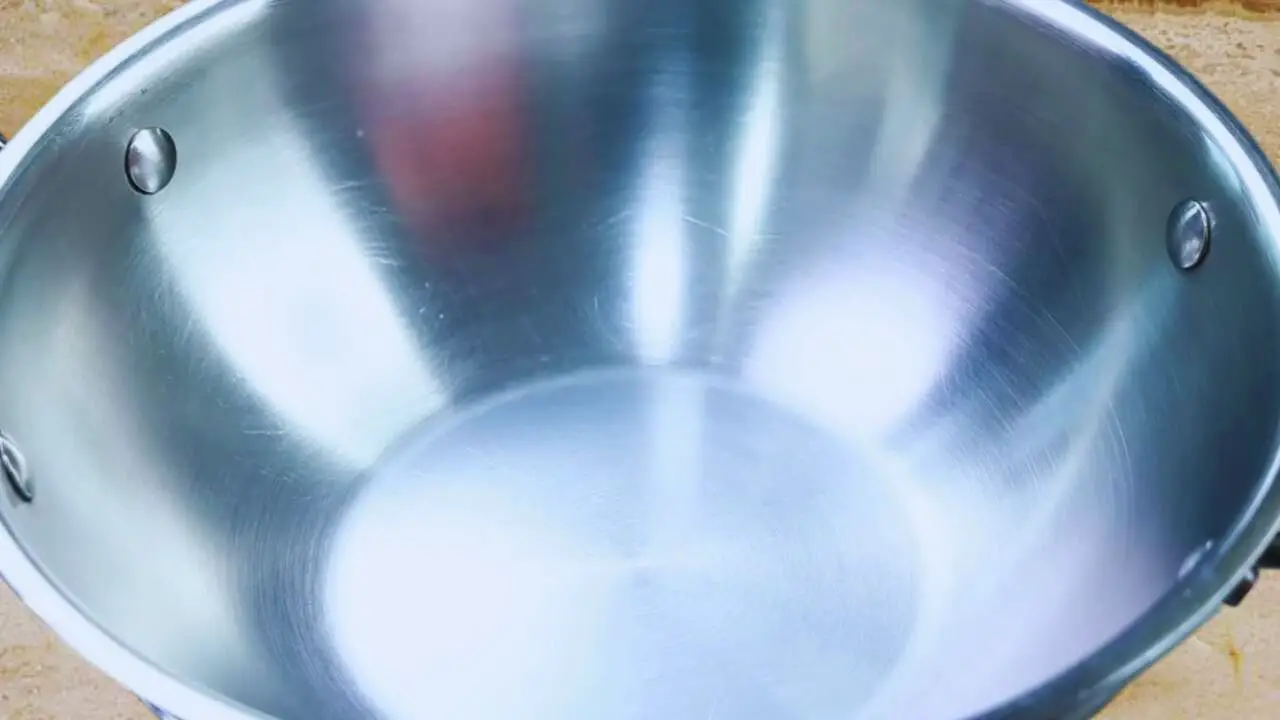
(Pro tip: You can use a frying pan instead, if you do not have a round bottom wok. Make sure that you heat the pan in a low flame).
Step 2: When the wok is hot enough, put 4 tbsp of split pigeon peas (toor dal) in it.
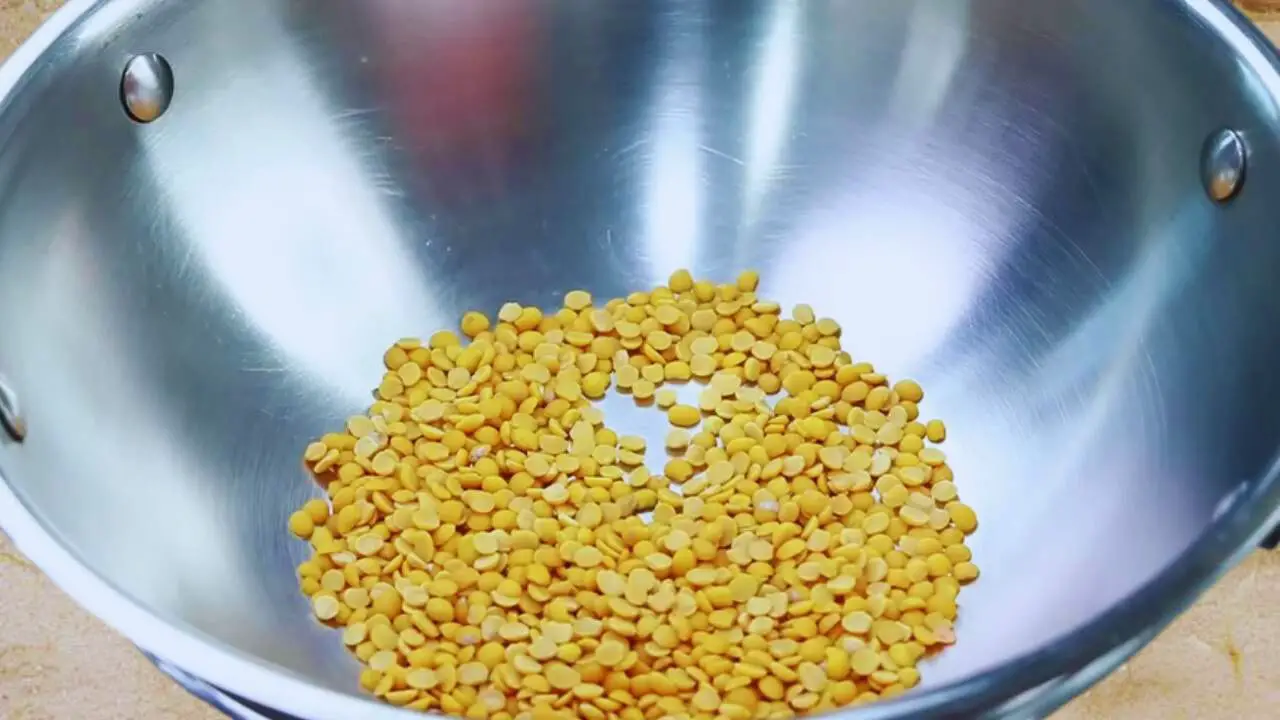
Step 3: Stir it continuously for about a couple of minutes.
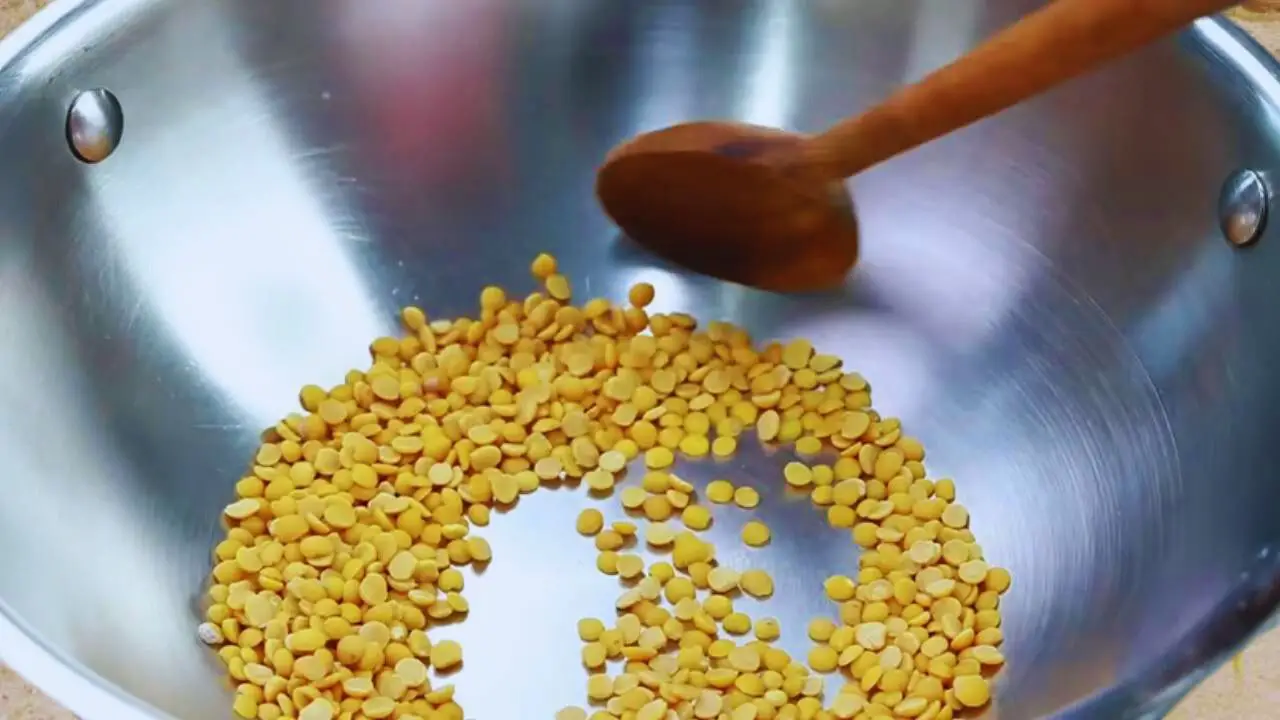
(Pro tip: Notice the change in color indicating that the dal is roasted nicely. Transfer it in a plate).
Step 4: Then, add 3 tbsp of coriander seeds in the wok.
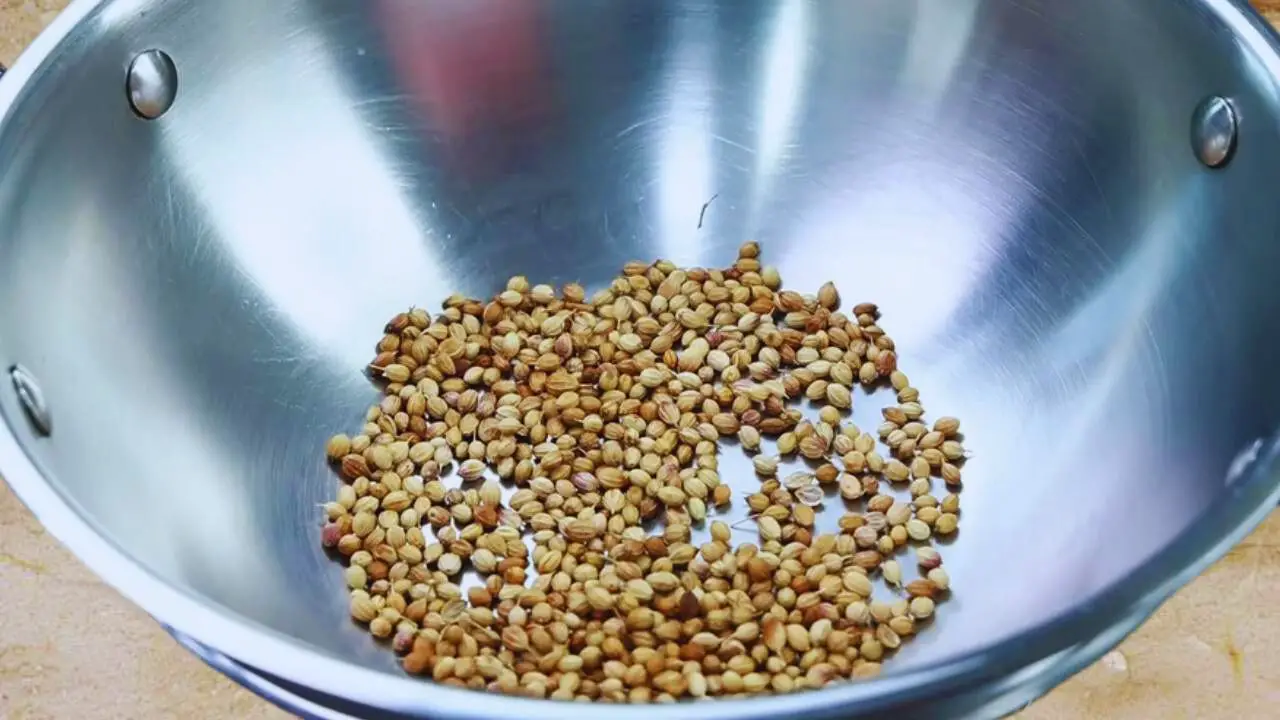
Step 5: Stir them continuously.
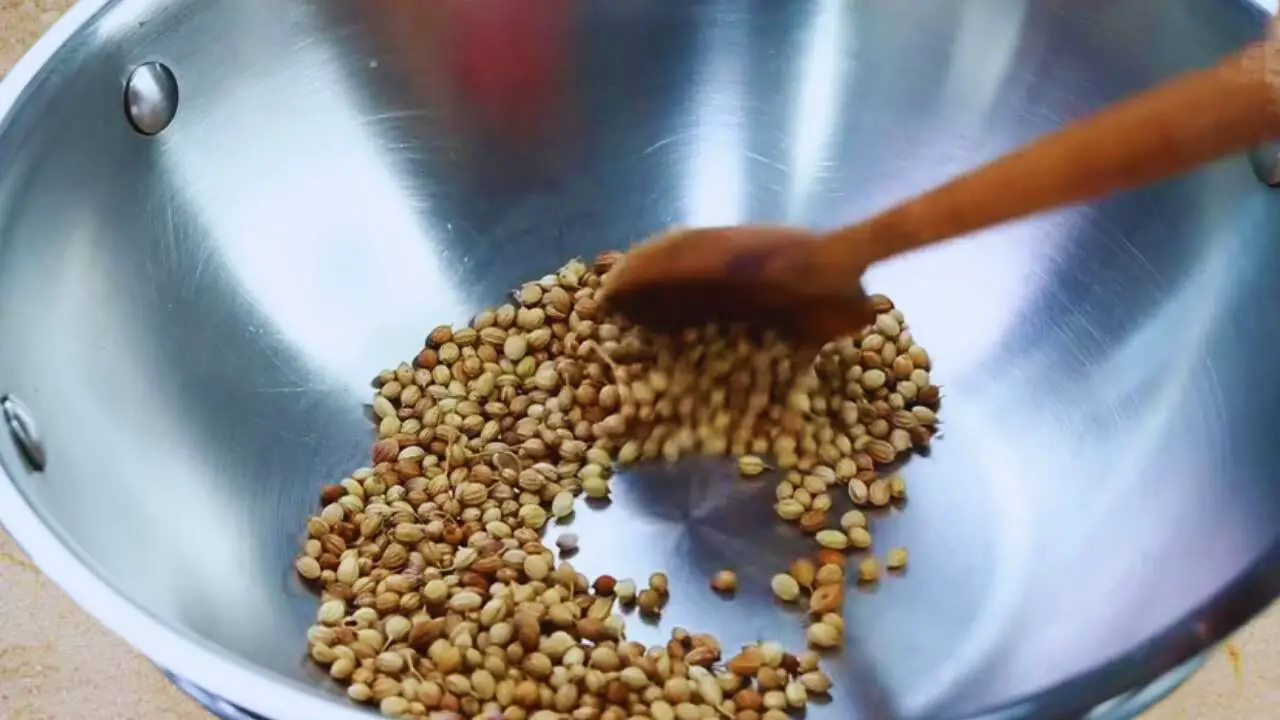
Step 6: When they are roasted nicely, as indicated by their slight change in color and the aroma it emits, Transfer the coriander seeds to the plate.

(Pro tip: You may stop roasting and transfer the coriander seeds to the plate when they start to crackle as well).
Step 7: Now, add 2.5 tbsp of black pepper in the hot wok. Stir them as well and transfer them to the plate when they are roasted nicely.
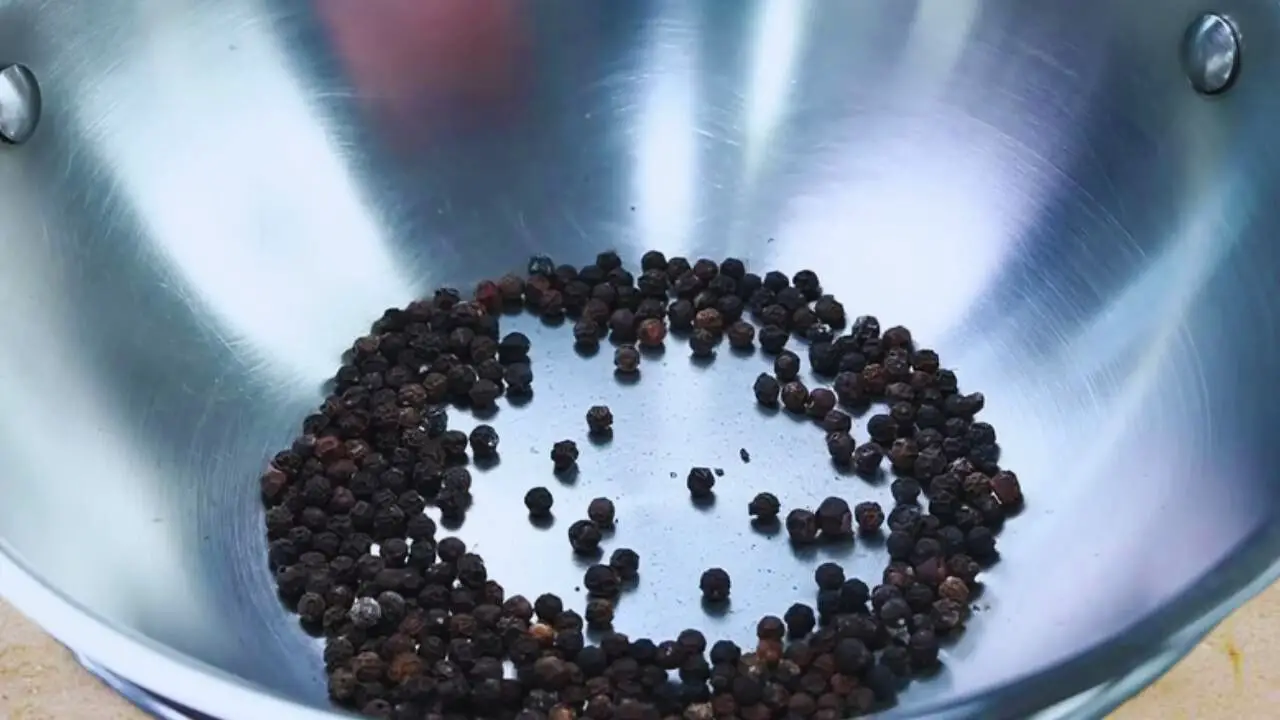
(Pro tip: If you want your rasam masala powder to be spicier, you may add a little more of black pepper corns).
Step 8: Then, add 2 tbsp of cumin seeds in the wok. Stir them and transfer them to the plate when done in the same way as you did with the other spices.
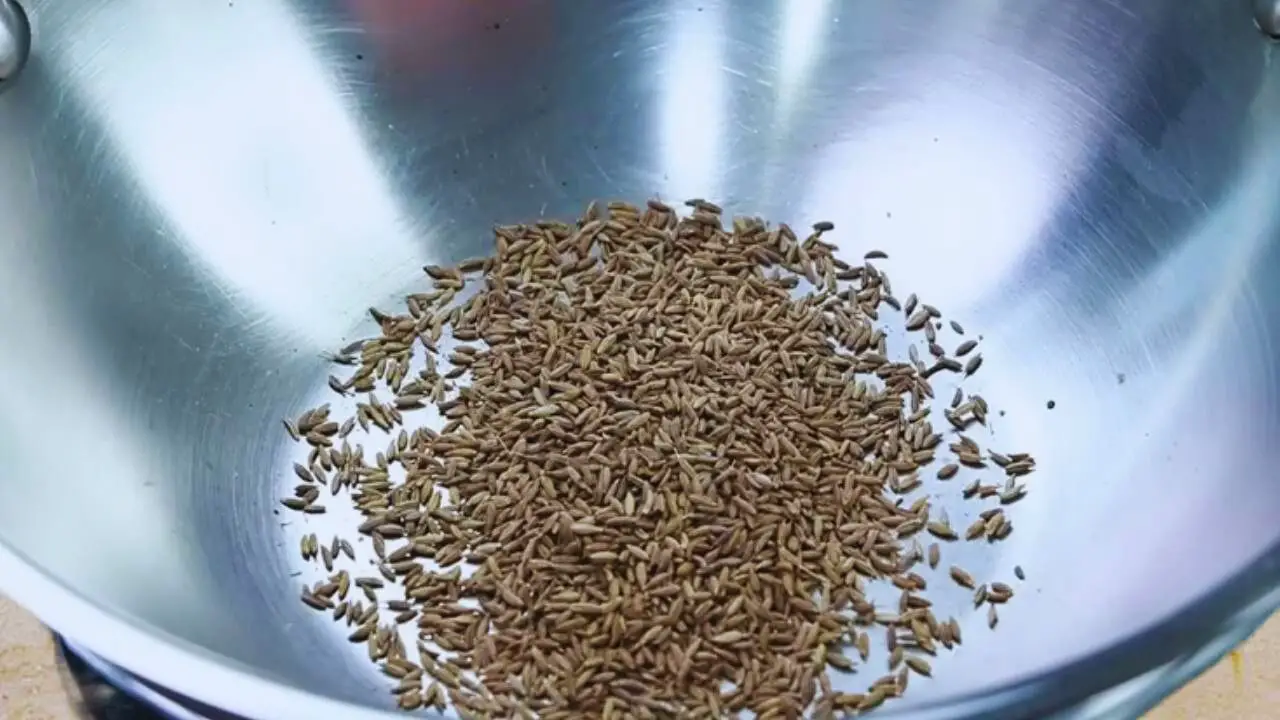
(Pro tip: The cumin seeds will start crackling and changing their color after a minute or so).
Step 9: Now, follow the same process to dry roast 1 tbsp of fenugreek seeds in the same wok and transfer them to the plate when done.
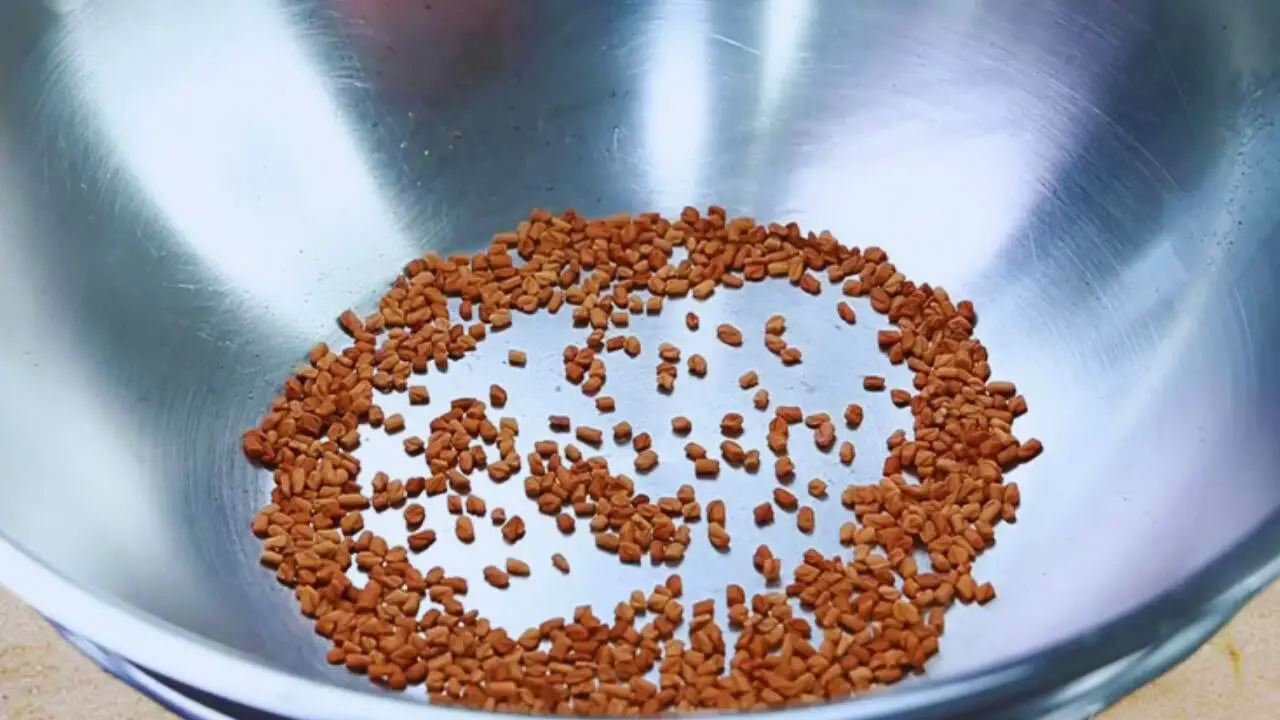
Step 10: Then add 10 to 12 pieces of dry red chilies in the pan.
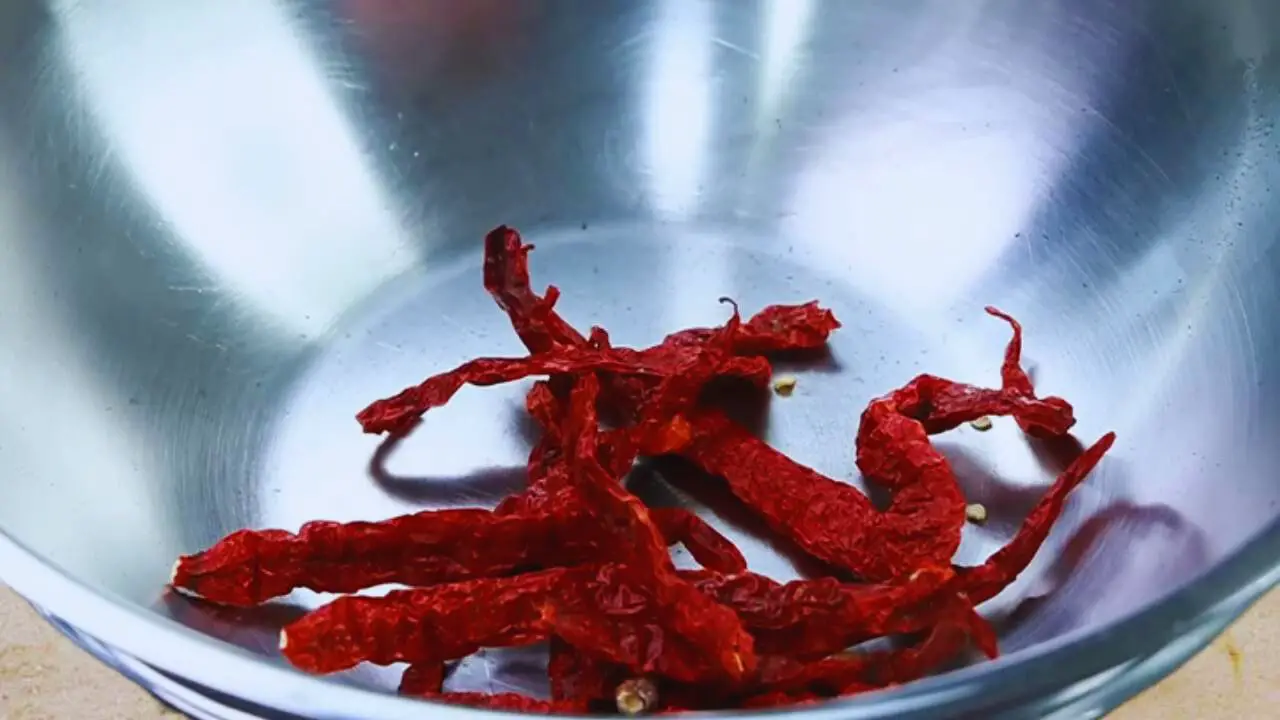
(Pro: If you want your rasam to be hot, you may increase the number of red chilies).
Step 11: Transfer them to the plate when they are roasted nicely and become slightly puffy.
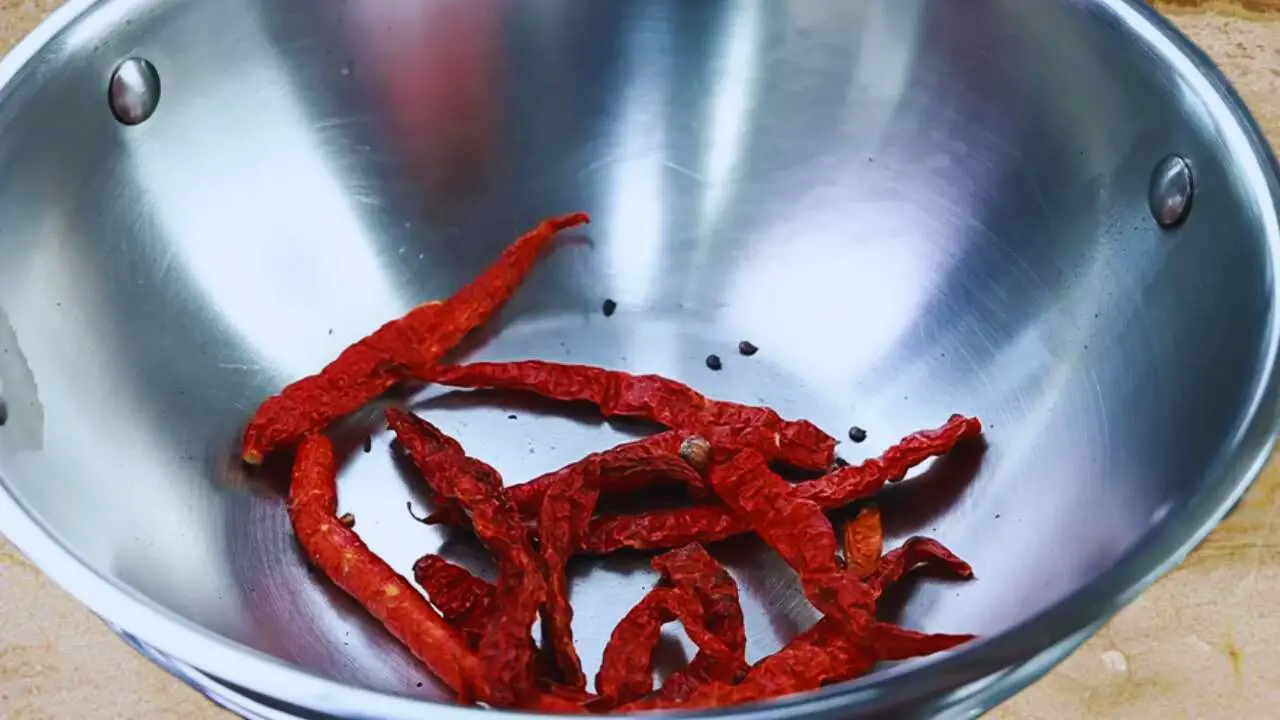
Step 12: Finally, add ¼ cup of fresh curry leaves in the wok.
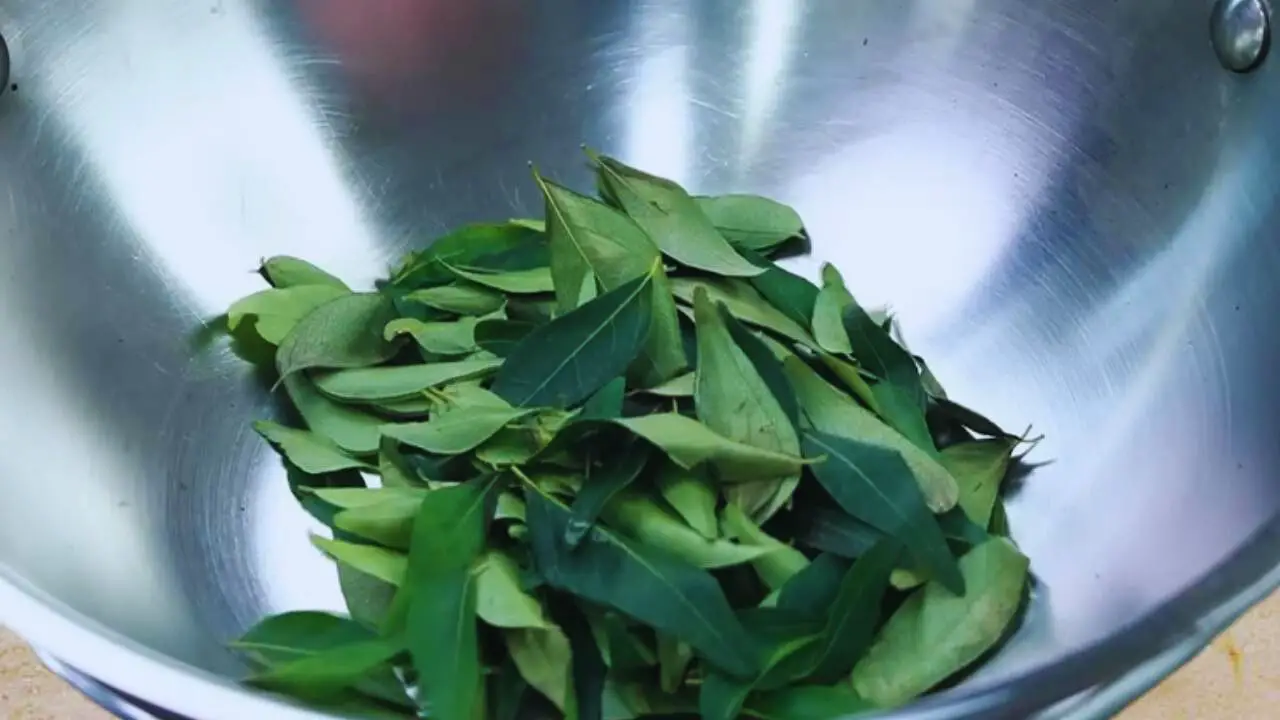
Step 13: Stir them for about a minute so that they lose all their moisture and become dry. Transfer them to the plate.
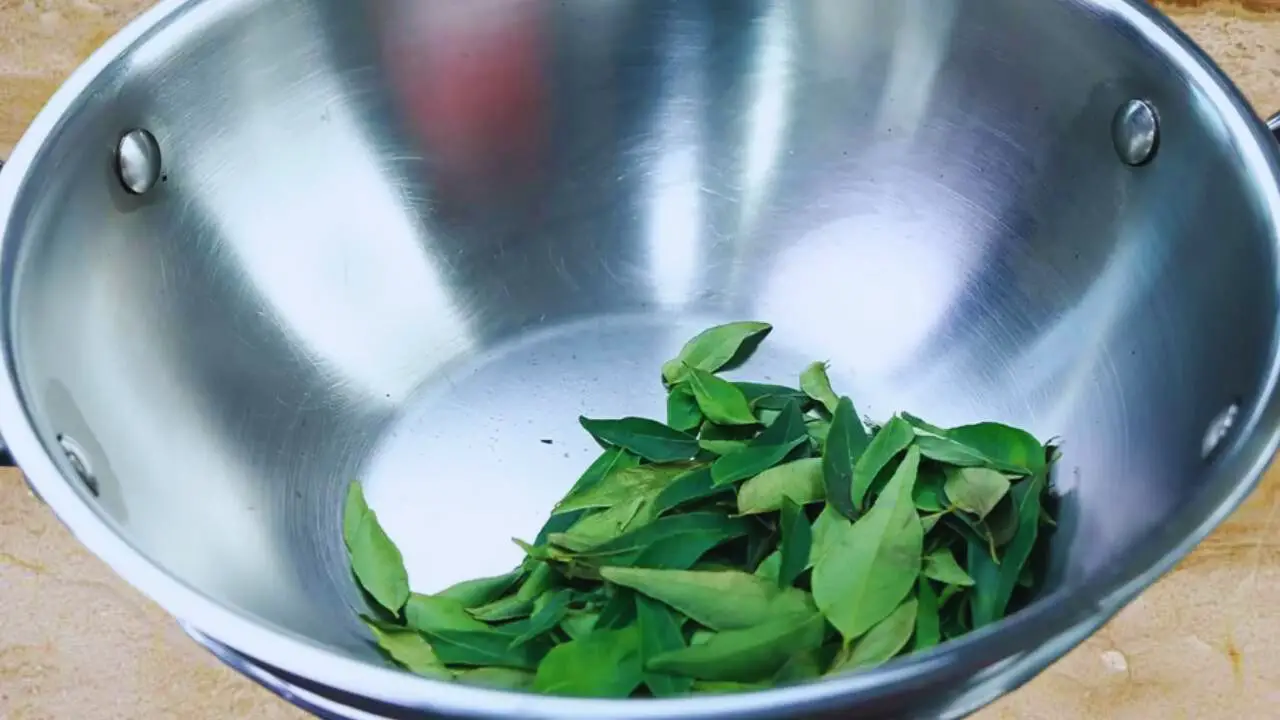
Step 14: Check that all the spices in the plate are cool enough.
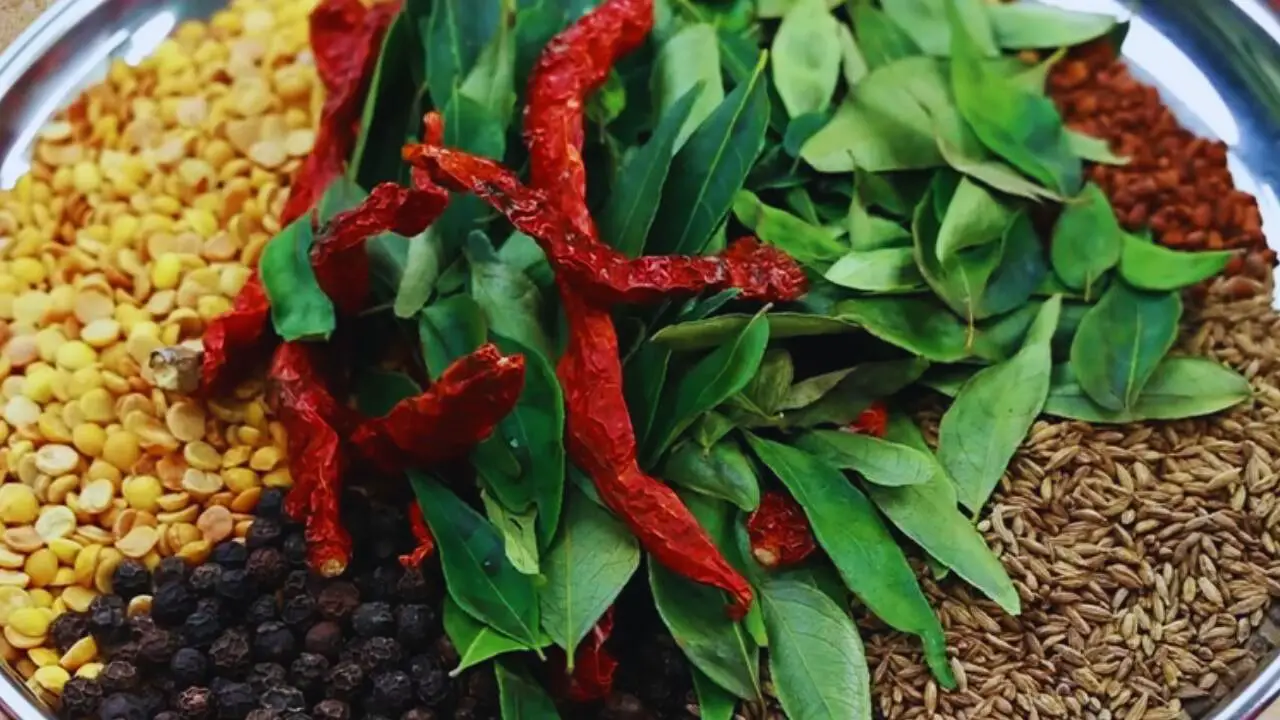
Step 15: Now, take a grinder and transfer the ingredients to it and add the rest of the powdered spices.
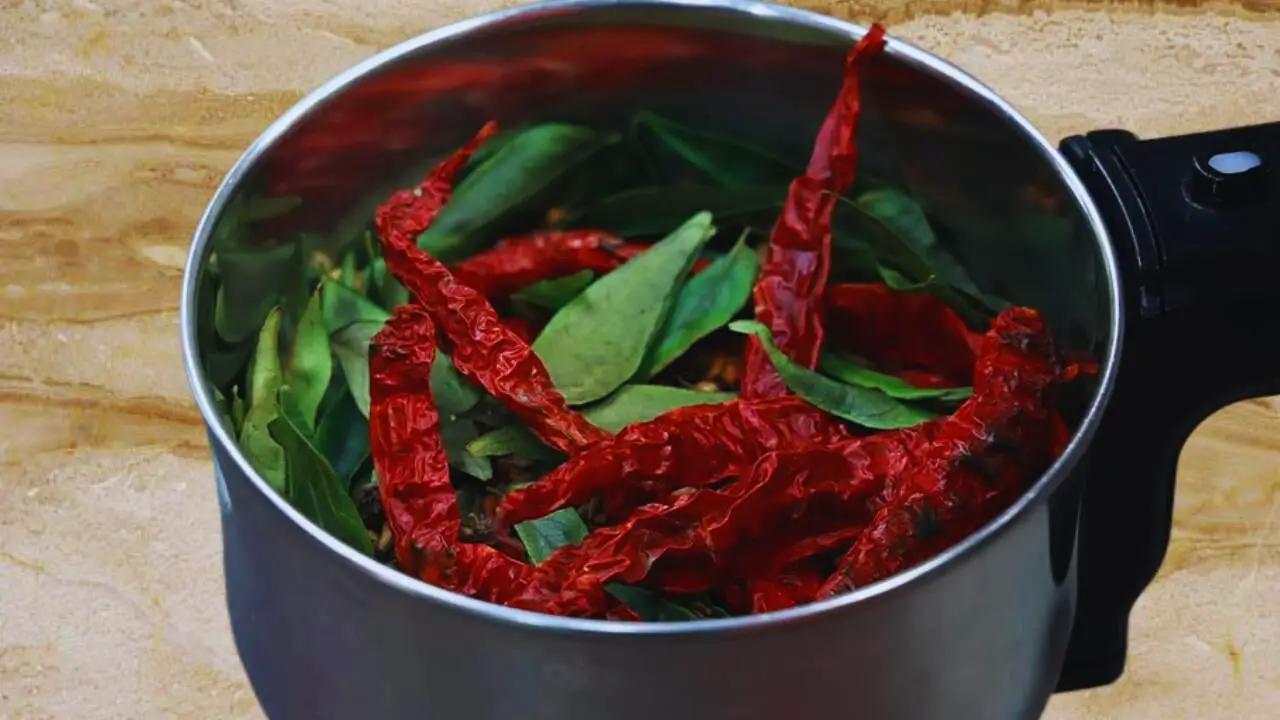
Step 16: In the grinder, first add ½ tsp of turmeric power to the ingredients.
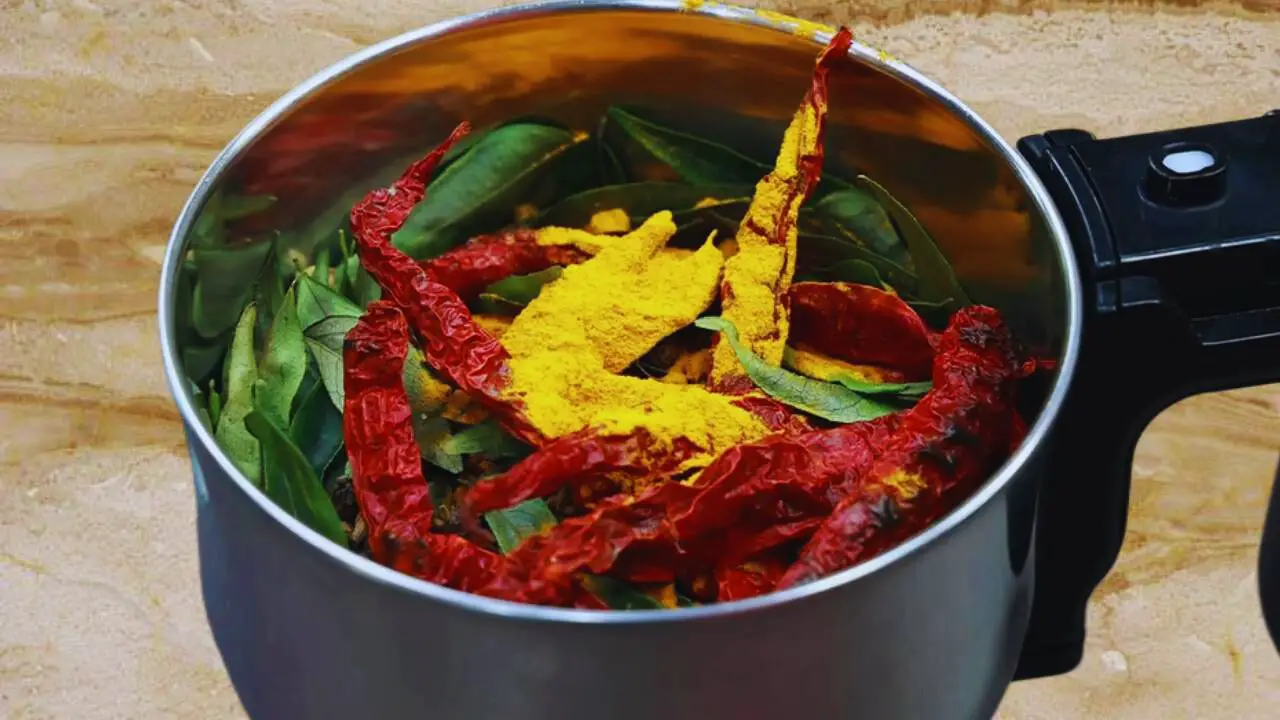
(Pro tip: You may skip adding turmeric power at this point if you prefer adding it in the rasam itself while cooking it).
Step 17: Follow it with 1 tsp of asafetida powder.
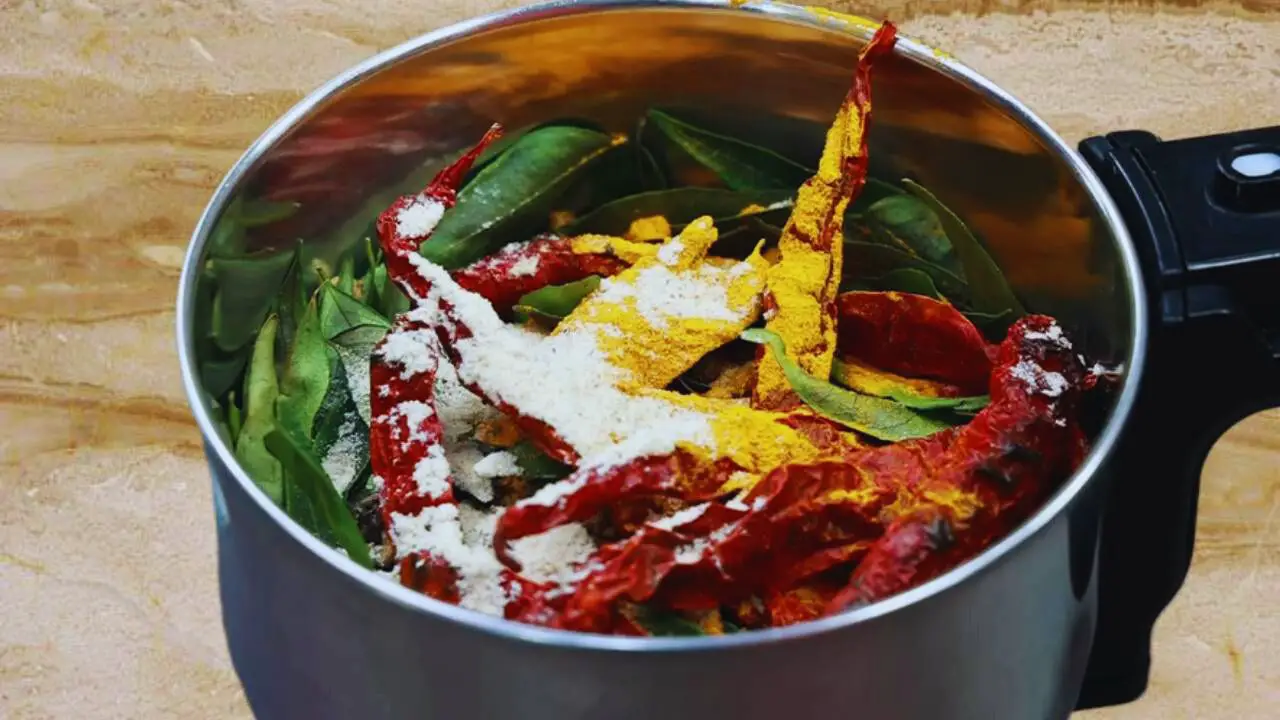
(Pro tip: If you are using asafetida in its powder form, add it at this point. If you use solid pieces, you will have to roast them separately and grind it in the grinder along with the other spices).
Step 18: Finally, add 1 tsp of regular table salt to the spices in the grinder.
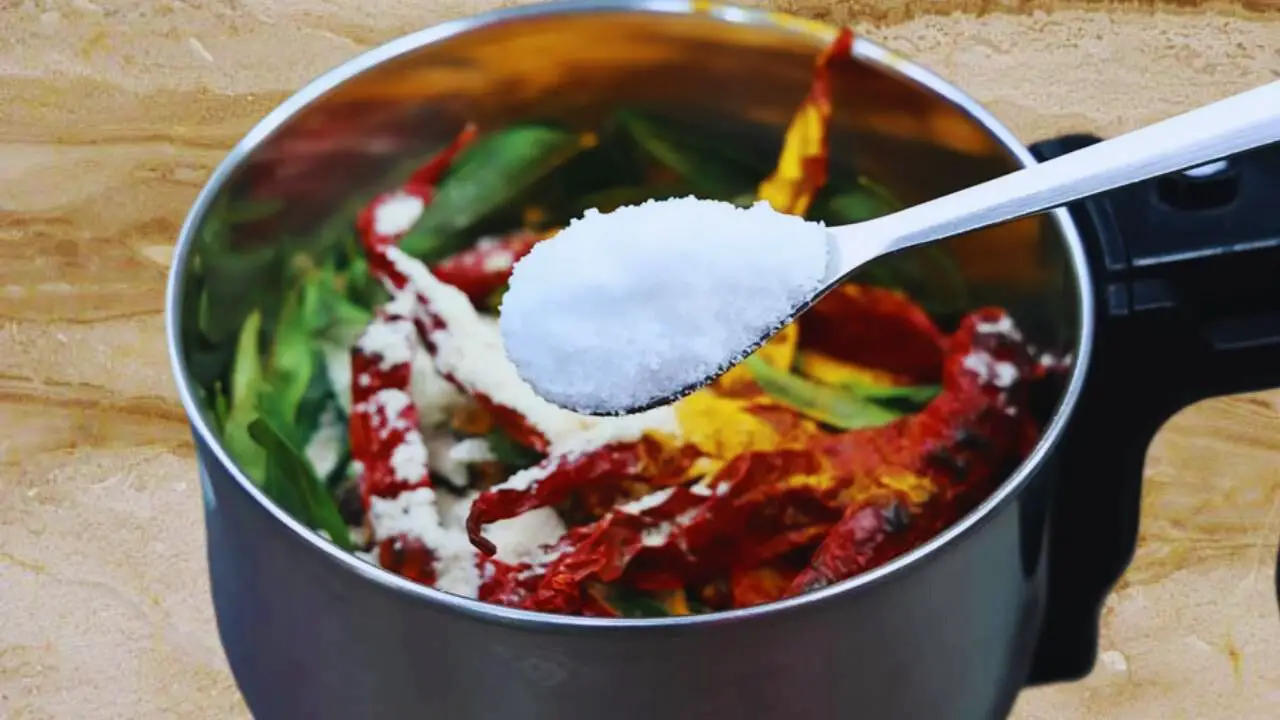
(Pro tip: Do not add too much of salt at this point. Remember, you will also need to add salt while making the rasam. If you add more of salt to the rasam masala powder itself, you will not be able to take it away or reduce the saltiness).
Step 19: Now, grind the spices to get a fine powder.
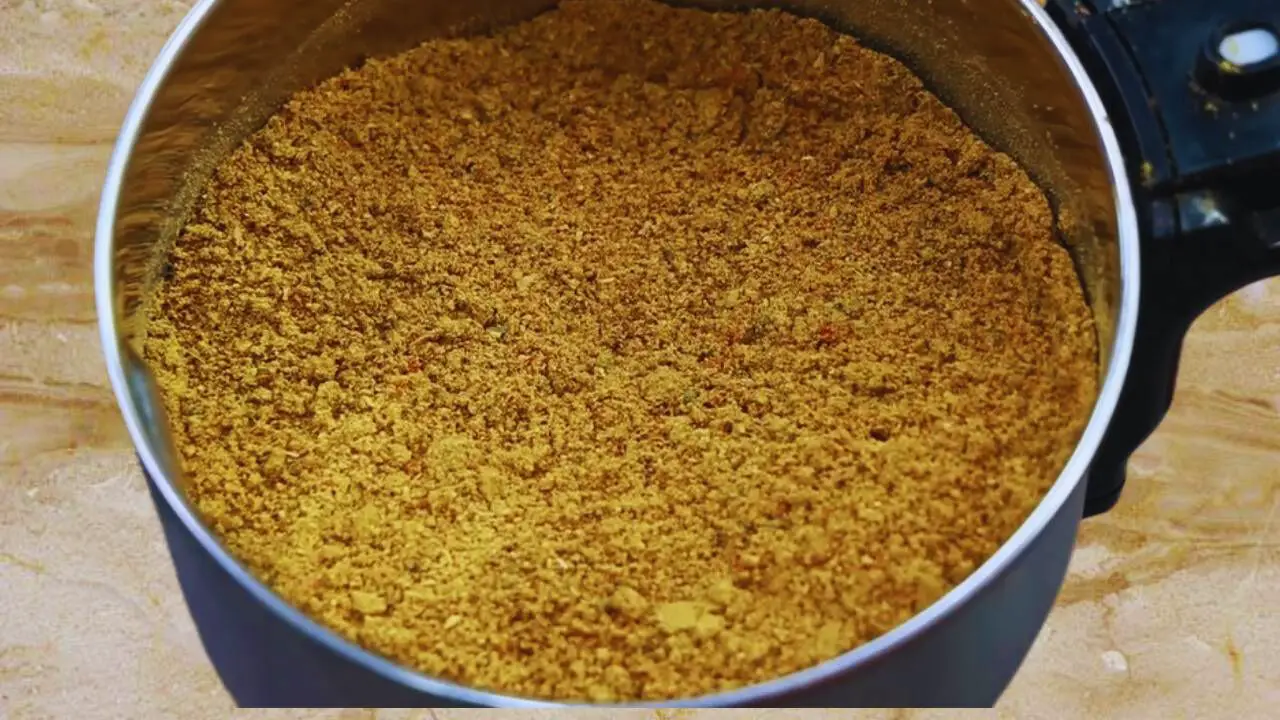
(Pro tip: Do not grind the spices at one go. Grinding them in short intervals will prevent heat buildup and clumping).
Step 20: Mix it and break the clumps, if any, with a spoon. Check the coarseness of the powder.
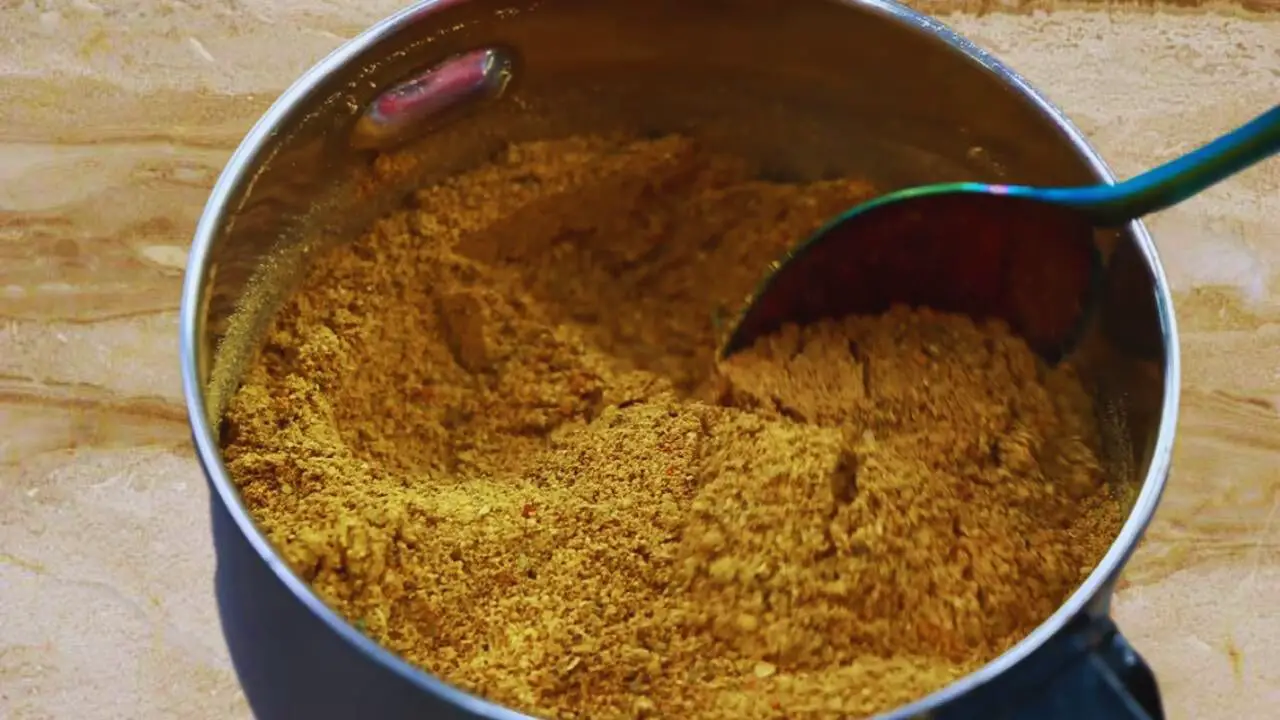
(Pro tip: If you want a finer and smoother texture of the masala powder, grind it for one more time).
Step 21: Transfer the ground spices from the grinder to a bowl and your flavorful rasam masala powder is ready to be used.
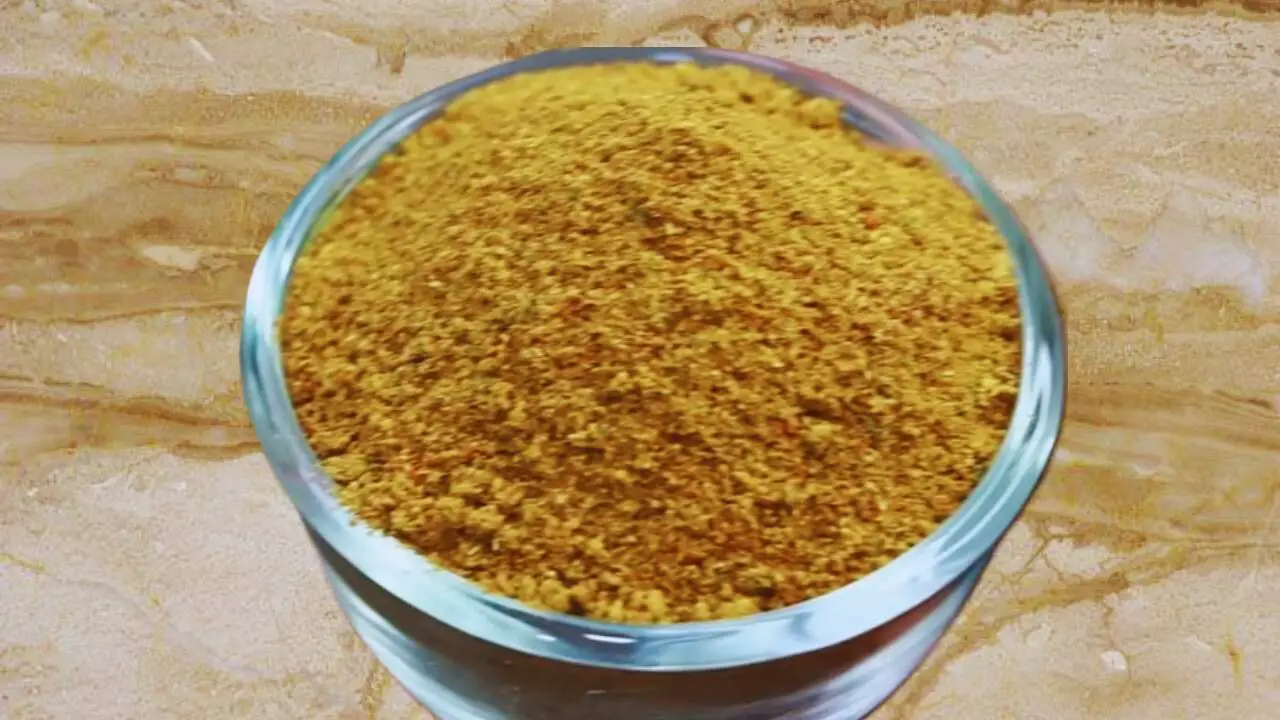
Recipe Card

Rasam Masala Powder
Ingredients
- 4 tbsp Split pigeon peas (toor dal)
- 3 tbsp Coriander seeds
- 2½ tbsp Black pepper
- 2 tbsp Cumin seeds
- 1 tbsp Fenugreek seeds
- 10 pieces Dry red chilies (without stem)
- ¼ cup Fresh curry leaves
- 1 tsp Turmeric powder
- 1 tsp Asafetida powder
- 1 tsp Table salt
Instructions
- Take a round bottom wok and heat it on a low flame on your gas stove to roast each of the ingredients to make rasam masala powder separately.(Pro tip: You can use a frying pan instead, if you do not have a round bottom wok. Make sure that you heat the pan in a low flame).
- When the wok is hot enough, put 4 tbsp of split pigeon peas (toor dal) in it.
- Stir it continuously for about a couple of minutes.(Pro tip: Notice the change in color indicating that the dal is roasted nicely. Transfer it in a plate).
- Then, add 3 tbsp of coriander seeds in the wok.
- Stir them continuously.
- When they are roasted nicely, as indicated by their slight change in color and the aroma it emits, Transfer the coriander seeds to the plate.
- (Pro tip: You may stop roasting and transfer the coriander seeds to the plate when they start to crackle as well).
- Now, add 2.5 tbsp of black pepper in the hot wok. Stir them as well and transfer them to the plate when they are roasted nicely.(Pro tip: If you want your rasam masala powder to be spicier, you may add a little more of black pepper corns).
- Then, add 2 tbsp of cumin seeds in the wok. Stir them and transfer them to the plate when done in the same way as you did with the other spices.(Pro tip: The cumin seeds will start crackling and changing their color after a minute or so).
- Now, follow the same process to dry roast 1 tbsp of fenugreek seeds in the same wok and transfer them to the plate when done.
- Then add 10 to 12 pieces of dry red chilies in the pan.(Pro: If you want your rasam to be hot, you may increase the number of red chilies).
- Transfer them to the plate when they are roasted nicely and become slightly puffy.
- Finally, add ¼ cup of fresh curry leaves in the wok.
- Stir them for about a minute so that they lose all their moisture and become dry. Transfer them to the plate.
- Check that all the spices in the plate are cool enough.
- Now, take a grinder and transfer the ingredients to it and add the rest of the powdered spices.
- In the grinder, first add ½ tsp of turmeric power to the ingredients.(Pro tip: You may skip adding turmeric power at this point if you prefer adding it in the rasam itself while cooking it).
- Follow it with 1 tsp of asafetida powder.(Pro tip: If you are using asafetida in its powder form, add it at this point. If you use solid pieces, you will have to roast them separately and grind it in the grinder along with the other spices).
- Finally, add 1 tsp of regular table salt to the spices in the grinder.(Pro tip: Do not add too much of salt at this point. Remember, you will also need to add salt while making the rasam. If you add more of salt to the rasam masala powder itself, you will not be able to take it away or reduce the saltiness).
- Now, grind the spices to get a fine powder.(Pro tip: Do not grind the spices at one go. Grinding them in short intervals will prevent heat buildup and clumping).
- Mix it and break the clumps, if any, with a spoon. Check the coarseness of the powder.(Pro tip: If you want a finer and smoother texture of the masala powder, grind it for one more time).
- Transfer the ground spices from the grinder to a bowl and your flavorful rasam masala powder is ready to be used.
Notes
- Take your time while roasting the spices. Ensure the flame is low to prevent burning and stir the ingredients continuously until the spices change the color slightly, start to crackle, or release their natural flavor, as the case may be.
- To ensure the right potency and flavor of the powder, I recommend grinding them in small batches. This will allow better control while grinding.
- Make sure that the curry leaves are dried thoroughly. This prevents introducing moisture to the final blend. In addition, it will also ensure a longer shelf life for the spice mix.
- Always cool the roasted spices completely before grinding. This will prevent clumping due to moisture to retain its texture and also enhance the flavor of the spices. You can spread them on a plate to cool them fast.
- I suggest grinding the spices in short intervals. This will prevent heat buildup and result in a fine and consistent powder.

